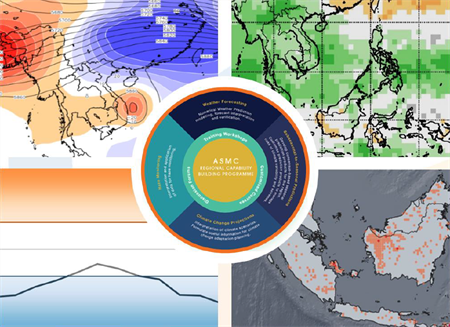Bulletin
06 APR 2022
ASMC
ASMC Bulletin (Issue #9, Mar 2022)
Summary
- In the second half of 2021,
- A weak negative Indian Ocean Dipole (IOD) prevailed through the second half of 2021.
- La Niña conditions re-emerged in September 2021.
- The Southern ASEAN region experienced a subdued haze season due to a relatively wetter dry season.
- Traditional dry season for the Northern ASEAN region began from December 2021.
- Over Southeast Asia,
- Typhoon Rai brought record winds and heavy rainfall to Viet Nam.
- Seasonal variation in June – September 2021 impacted the agriculture sector in Thailand.
- Brunei Darussalam experienced anomalous heavy rainfall in July 2021.
- Intra-seasonal and inter-annual climate variability contributed to extreme events in the Philippines.
- Between March and August 2022,
- The current La Niña conditions are predicted to return to ENSO neutral conditions by mid-2022.
- The Indian Ocean Dipole (IOD) is expected to continue in its current neutral phase.
- Models predict wetter conditions over much of Southeast Asia, in line with La Niña conditions.
- Hotspot activity and smoke haze over Mekong sub-region are likely to persist till May 2022.
- ASMC Regional Capability-Building Programme (ACaP):
- 17th ASEAN Climate Outlook Forum (ASEANCOF-17) held in November 2021
- ASEAN Hotspot and Haze Assessment (H2A) Workshop held in February 2022
- Upcoming event: ASEANCOF-18 (tentatively May 2022)
Climate Review (July – December 2021): A weak negative IOD event followed by a late re-emerging of La Niña conditions
Regional Fire and Haze Situation (July – December 2021): A subdued haze season over the southern ASEAN region
Climate and Haze Outlook (March – August 2022): Signs of La Niña decay
Significant weather events in Southeast Asia
Regional activities and ASMC events
 Back
Back